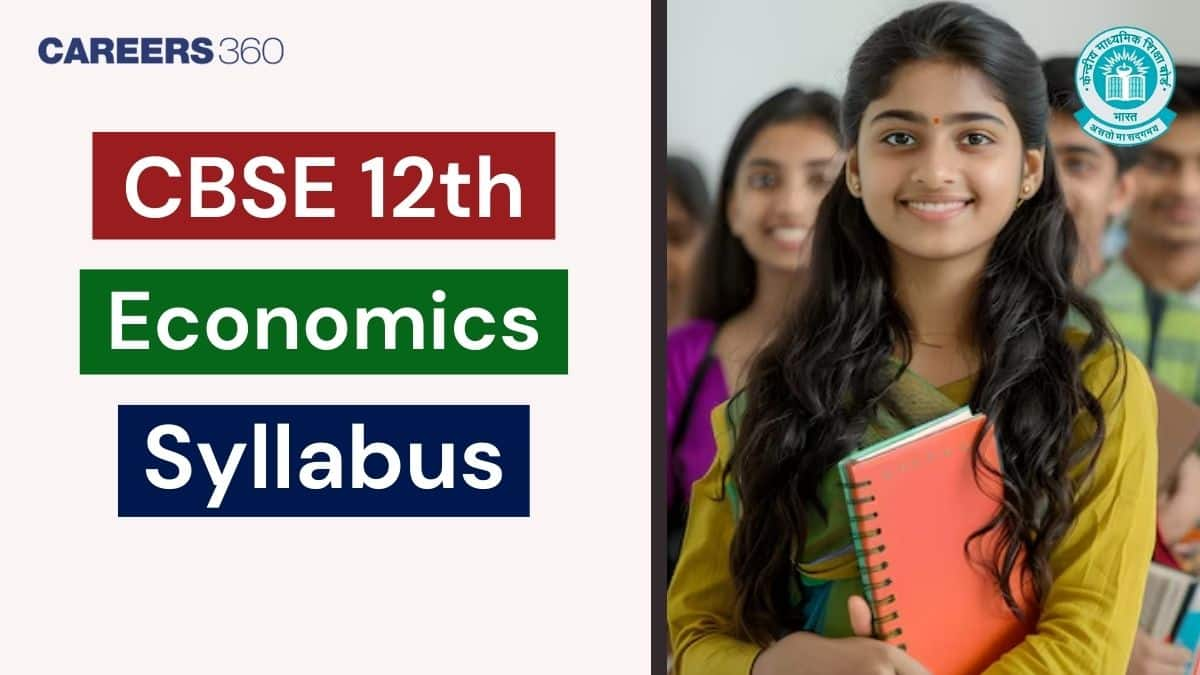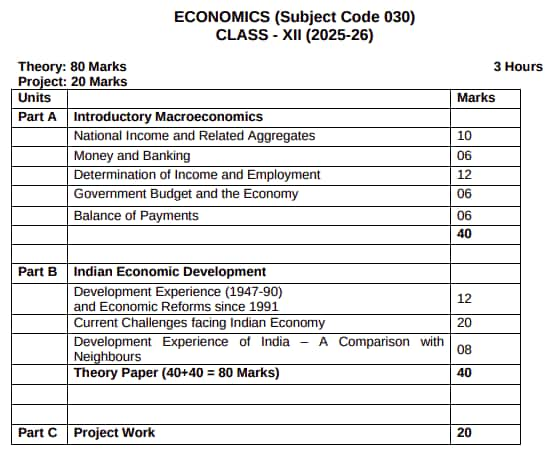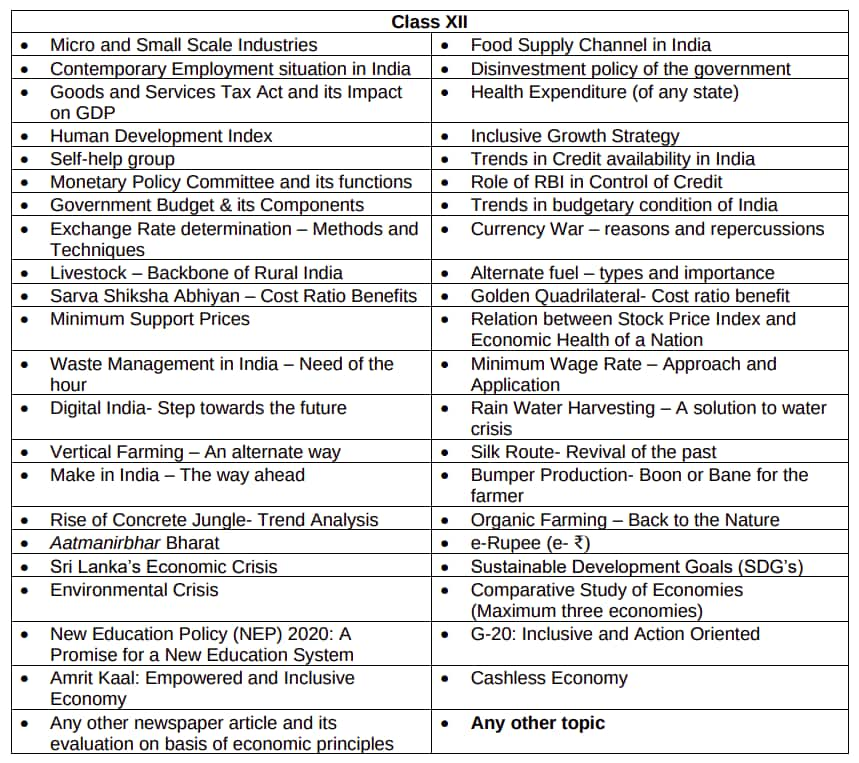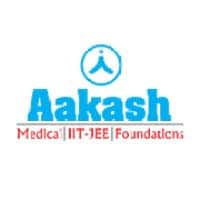Aakash Repeater Courses
Take Aakash iACST and get instant scholarship on coaching programs.
CBSE Class 12 Economics Syllabus 2025-26 - The Central Board of Secondary Education released the latest CBSE syllabus of Economics Class 12. The CBSE Class 12 Economics syllabus 2025-26 is available on cbseacademic.nic.in. The CBSE board has divided the entire syllabus into two parts: Part A (Introductory Macroeconomics) and Part B (Indian Economic Development). All the topics of the economics syllabus class 12 CBSE are important for exams.
Download: CBSE Class 12 Economics Syllabus 2025-26 PDF

Students should refer to the Economics class 12 CBSE syllabus to prepare for the CBSE 12th exams. Topic-wise weightage of marks is also mentioned in the Economics syllabus of class 12 CBSE. Students can find an overview and detailed CBSE Class 12 Economics syllabus in this article, along with a download link to the CBSE Economics syllabus 12th Class. Read further to know in detail the complete CBSE Class 12 Economics syllabus 2025-26.
The board released the detailed syllabus of the CBSE 12th syllabus 2025-26. Students should check each topic and understand the concepts better to score good marks in the final exams.
Take Aakash iACST and get instant scholarship on coaching programs.
Students can download the economics syllabus for class 12 for the CBSE board exam to prepare better. Go through the steps given below to download the Class 12 CBSE Economics syllabus 2025-26:
Step 1: Visit the official website at cbseacademic.nic.in.
Step 2: Click on the “Academic Website” on the homepage.
Step 3: Click on the “Curriculum” from the list of options mentioned in the menu bar.
Step 4: Select the “Curriculum 2025-26” from the dropdown menu.
Step 5: Click on the “Senior Secondary Curriculum” link for the Class 12 syllabus.
Step 6: Select the “Academic Subjects” link to download the Economics syllabus PDF.
Step 7: Download the CBSE 12th Economics syllabus for 2025-26 for future reference.
Students can check the prescribed Economics syllabus of class 12 CBSE in the image given below. The CBSE 12th Economics syllabus is divided into 2 parts. Part A consists of Macroeconomics, and Part B consists of Indian Economic Development. Students must note that the theory paper will have a weightage of 80 marks, while 20 marks are reserved for the project work. To understand better, students should thoroughly understand the syllabus of the Economics class 12 CBSE 2025-26. Check the image given below to get an overview of the CBSE class 12 Economics syllabus 2025-26.

The entire CBSE Economics class 12 syllabus is designed to be covered in approximately 200 periods. The written exam will carry a weightage of 80 marks, and 20 marks are allotted for the project work. Check the chapter-wise detailed CBSE Economics class 12 syllabus in the following tables:
Unit-name | Chapters and Topics |
Unit 1: National Income and Related Aggregates |
|
Unit 2: Money and Banking |
|
Unit 3: Determination of Income and Employment |
|
Unit 4: Government Budget and the Economy |
|
Unit 5: Balance of Payments |
|
Unit name | Chapters and Topics |
Unit 6 - Development Experience (1947-90) and Economic Reforms since 1991 |
|
Unit 7 - Current challenges facing the Indian Economy |
|
Unit 8: Development Experience in India |
|
Below are some of the best books for the 12th economics syllabus for the CBSE exam. Check them out.
Statistics for Economics, NCERT
Indian Economic Development, NCERT
Introductory Microeconomics, NCERT
Macroeconomics, NCERT
Supplementary Reading Material in Economics, CBSE
CBSE Class 12 Economics Project Topics

First of all, make a proper timetable to study, which includes all the subjects. Also, include some time for interests and hobbies to keep the mind fresh.
Go through the CBSE 12th date sheet and try to cover the entire 12th CBSE Economics syllabus two months before the exams. In such a way, students will have enough time to revise the CBSE Class 12 Economics syllabus 2025-26.
Grasp all the concepts from the NCERT books or prescribed books in the beginning, then move on to other reference books for economics.
Clear all the doubts from teachers or friends and make notes on important topics of the CBSE class 12 Economics syllabus 2025-26.
These notes will help to revise the entire CBSE 12th Economics syllabus in a short time.
Solve CBSE class 12 question papers of previous years to get acquainted with the typology of questions that are asked in the exam.
Analyse the preparation level by evaluating the performance in solving the question papers and improving mistakes by identifying them.
Following this CBSE class 12 Economics syllabus 2025-26 and preparation tips will aid students to improve their CBSE 12th result.
Related Links:
Class 12 Economics question paper is prepared by the board as per the prescribed CBSE Class 12 Economics syllabus 2025-26.
Yes, it is essential to submit project work else students do not qualify in project work assessment.
A total of 200 periods are required to cover the CBSE 12th economics syllabus.
CBSE Class 12 Economics syllabus 2025-26 is divided into the following two parts:
Hello, according to CBSE and most Indian education boards, the typical age for appearing in the Class 10 exam is around 15-16 years. However, there are some exceptional cases where academically advanced students complete their studies early. If you have officially cleared Class 10 from CBSE, received a valid marksheet, and your school and board have accepted your age proof during registration, your certificate is considered valid. Problems only arise if your admission to Class 10 violated the board’s eligibility rules (for example, skipping multiple classes without approval). In such rare cases, the board might question the validity. But if CBSE has issued you the certificate after proper procedures, it is legally recognized for further studies, competitive exams, and jobs. If you are worried about age restrictions for certain exams (like 17 years minimum for NEET), you might need to wait until you meet the required age.
Thank you, and best of luck for your studies.
Hello,
Yes, you are right. To get eligible for the 10th board examination, you need a minimum of 75% attendance. This is a rule that applies to the CBSE, or Central Board of Secondary Education, recognized schools. There are exceptions to this rule in the scenario, like
I hope it will clear your query!!
hello,
These are the documents to take admission in 11th standard at your college from cbse to Maharashtra State Board.
I hope it resolves your query!!
To transfer from a CBSE school to a Maharashtra state board junior college for 11th standard, you'll need to provide several documents.
These typically include: your Class 10th mark sheet (original and attested copies), School Leaving Certificate/Transfer Certificate (TC) from your previous school, and a migration certificate if you're changing from a different board.
You'll also need a birth certificate, passport-sized photographs, and potentially an eligibility certificate from the Maharashtra State Board
The specific documents required may vary depending on the college and region. Verify the exact requirements with the college's admission office or official website.
Hello Aditya,
The documents required to take admission in 11th standard from CBSE to Maharashtra State Board are:
10th Marksheet (CBSE Board)
School Leaving Certificate (from previous school)
Migration Certificate (CBSE Board)
Aadhaar Card (student’s ID proof)
Passport size photographs
Caste Certificate (if applicable)
Domicile Certificate (if required by the college)
Some colleges may ask for additional documents. It’s best to check with the specific college for exact requirements.
Hope it helps !

Take Aakash iACST and get instant scholarship on coaching programs.

This ebook serves as a valuable study guide for NEET 2025 exam.

This e-book offers NEET PYQ and serves as an indispensable NEET study material.

As per latest syllabus. Physics formulas, equations, & laws of class 11 & 12th chapters
As per latest syllabus. Chemistry formulas, equations, & laws of class 11 & 12th chapters
As per latest 2024 syllabus. Study 40% syllabus and score upto 100% marks in JEE